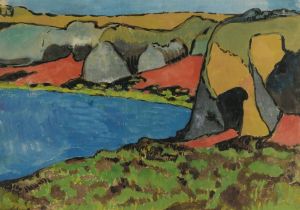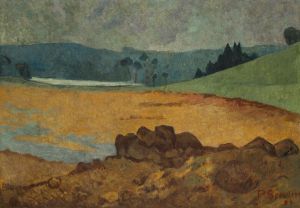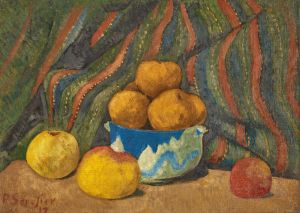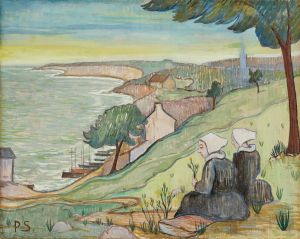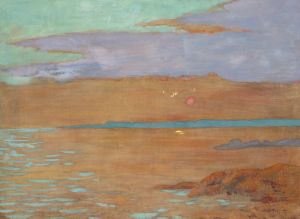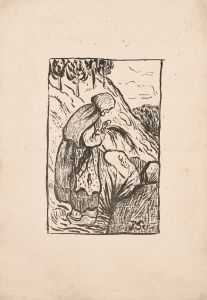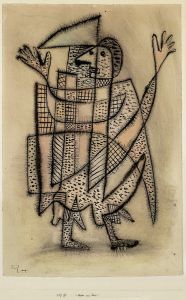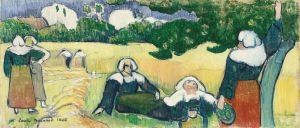
Jeune bretonne à la faucille
A hand-painted replica of Paul Sérusier’s masterpiece Jeune bretonne à la faucille, meticulously crafted by professional artists to capture the true essence of the original. Each piece is created with museum-quality canvas and rare mineral pigments, carefully painted by experienced artists with delicate brushstrokes and rich, layered colors to perfectly recreate the texture of the original artwork. Unlike machine-printed reproductions, this hand-painted version brings the painting to life, infused with the artist’s emotions and skill in every stroke. Whether for personal collection or home decoration, it instantly elevates the artistic atmosphere of any space.
Paul Sérusier's "Jeune bretonne à la faucille" is a notable work by the French Post-Impressionist painter, who was a prominent figure in the Symbolist movement and a member of the artist group known as Les Nabis. Sérusier, born in Paris in 1864, was deeply influenced by the works of Paul Gauguin and the Pont-Aven School, which played a crucial role in shaping his artistic style.
"Jeune bretonne à la faucille," which translates to "Young Breton Woman with a Sickle," is a painting that reflects Sérusier's interest in Breton culture and rural life. The painting is characterized by its use of bold colors and simplified forms, which are hallmarks of Sérusier's style and the broader Symbolist movement. This approach was influenced by Gauguin's emphasis on the emotional and spiritual aspects of art, rather than mere representation.
The subject of the painting, a young Breton woman, is depicted holding a sickle, an agricultural tool, which suggests a connection to the rural and agrarian lifestyle of Brittany, a region in northwestern France. Brittany was a significant source of inspiration for Sérusier and many of his contemporaries, who were drawn to its distinct cultural identity and picturesque landscapes. The use of a sickle also symbolizes the harvest and the cyclical nature of life, themes that were often explored in Symbolist art.
Sérusier's technique in this painting involves the use of flat, unmodulated colors and strong outlines, which create a sense of two-dimensionality. This stylistic choice was influenced by Japanese prints and the cloisonnism technique, which Sérusier adopted after his encounters with Gauguin. The painting's composition is carefully balanced, with the figure of the young woman placed centrally, drawing the viewer's attention to her serene expression and the symbolic sickle.
The painting is also notable for its exploration of the spiritual and mystical aspects of everyday life, a common theme in Sérusier's work. By focusing on a simple, rural subject, Sérusier elevates the ordinary to a level of symbolic significance, inviting viewers to contemplate the deeper meanings behind the scene.
"Jeune bretonne à la faucille" is an example of Sérusier's contribution to the development of modern art, particularly through his role in Les Nabis. This group of avant-garde artists sought to break away from traditional artistic conventions and explore new ways of expressing emotion and spirituality through color and form. Sérusier's work, including this painting, played a pivotal role in the transition from Impressionism to more abstract and symbolic forms of art.
Today, Paul Sérusier is remembered as a key figure in the Symbolist movement and as an artist who helped pave the way for future developments in modern art. His works, including "Jeune bretonne à la faucille," continue to be studied and appreciated for their innovative use of color, form, and symbolism, reflecting the rich cultural and artistic heritage of Brittany and the broader Symbolist movement.





